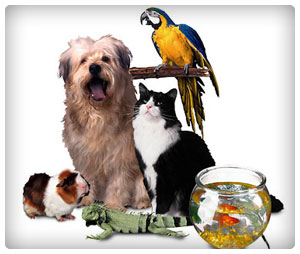Moving with Pets
Worried about moving your pet?
Moving with a pet can be a tough task. Unlike furniture, TVs and paintings, pets have special needs that you need to consider, especially when moving long distances. Here’s what you need to know when deciding how to move your pet by yourself or through a pet moving company:
The Basics
No matter what pet you have or where you’re going, there are some basic questions that you need to answer:
1. How will I move my pet? Decide if you’ll be driving, flying or hiring a pet agency to transport your pet.
2. Is my pet healthy enough to move? Visit your pet’s veterinarian before moving – make sure your pet is fit to move and get some advice on how best to move him or her. Also, every city and state in the United States requires a veterinarian-issued health certificate declaring that your animal is free from any infectious disease and has all current vaccinations.
3. Can I move my pet? Contact the state veterinary department in the state you are moving to and ask about their requirements for new pets:
- Do they quarantine pets? If so, for how long?
- How long is your pet’s health certificate good for?
- Are rabies shots necessary?
- Do they require entry permits?
- Do they limit the number of dogs and cats in a home?
- Can you apply for a pet license before moving? If not, how soon must your pet be licensed?
Flying: How to Transport a Pet in a Plane
Every airline has its own policies and procedures for animals. Some allow small pets who fit into a 21” carrier to be brought onto the flight with the paid passenger. Larger animals usually must travel in the cargo area. Here are some steps to follow when flying with your pet:
Step 1. Visit airline websites to find the best pet-friendly airline for your needs, then contact the company directly. Questions to ask:
- What are the transportation charges?
- Must the animal be accompanied or can it fly alone?
- Is pet insurance necessary? How much does it cost?
- What are the shipping requirements, such as container sizes, food restrictions, etc.?
Step 2. Once you decide to fly, make your pet’s reservation as far in advance as possible because the number of animals are limited per flight. Try to get a non-stop flight to simplify the trip for you and your pet.
Step 3. When flying, avoid tranquilizing your pet, as the American Veterinary Medical Association warns is can cause cardiac and respiratory problems for your pet. It will also limit your pet’s ability to balance.
Driving: How to Transport a Pet in a Car
Driving with your pet is safer and easier than flying. However, there are a few things you can do to make your pet’s driving experience more comfortable and safer.
Step 1. Run short errands with your pet for a few weeks before your move date. Use a crate/kennel/cage if you plan on using one during your move.
Step 2. Prepare a travel kit for your pet’s needs. Include:
- Food and water
- Feeding bowls
- Leash
- Favorite toy or blanket
- Treats
- Plastic bags for cleanups
Step 3. Plan your driving route. Especially if you’re driving across the country, your pet will to need bathroom breaks and exercise. Knowing parks and rest stops along your route ahead of time is a huge time saver.
Step 4. Reserve pet-friendly hotels or campgrounds if you’ll be staying overnight.
Step 5. Secure an ID tag with your phone number to your pet in case it escapes in an unfamiliar area.
Driving with your pet can be a fun and memorable experience, but keep in mind that they can’t always go to the same restaurants, amusement parks, and national monuments that you want to stop at along the way.
Pet Moving Companies
There are moving companies that specialize in pet transportation. Pet movers will move your pet to your new home and take care of it en route. Their services are especially useful for larger, disabled or unique pets and for long-distance moves.
Many pet transportation agencies are all inclusive. For one fee, they’ll transport your pet, provide it exercise time, feed it per your feeding schedule, and make all over night arrangements, if necessary.
Related Articles
Moving with Birds
Moving with Cats
Moving with Dogs
Moving with Fish



